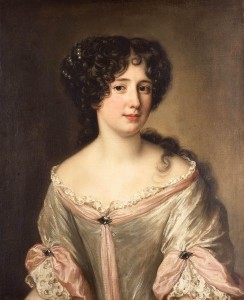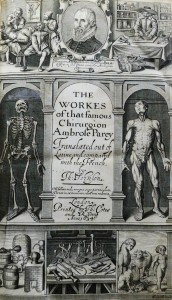by Elizabeth C. Goldsmith (W&M Contributor)
 Virginity was a precious commodity on the marriage market in the early modern era, and it continues to be in some cultures today.
Virginity was a precious commodity on the marriage market in the early modern era, and it continues to be in some cultures today.
A couple of years ago, the BBC aired a story about a device designed to help a woman fake her own virginity. Called an artificial hymen, it was made in China and could be ordered online. Many of these were being sold to customers in North Africa, a situation that prompted Egypt to attempt to ban their import.
I encountered this story as I was writing a biography of two sisters, noblewomen at the courts of France and Italy, who had created great scandal by running away from the marriages that had been assigned to them. Marie Mancini, the older of the two, had been the young love of king Louis XIV before his own marriage. He had been forced to abandon her when it came time for his politically determined marriage to a Spanish princess. His youthful romance with Marie has always been described as “innocent” in the history books. Historians have become quite attached to the idea that theirs was a romance that was not consummated. In the title of my biography I use the word “mistress” to describe Marie’s relationship to the king, and I received some objections to that term from readers who pointed out that Marie had remained a virgin until her own arranged marriage, to the Roman prince Lorenzo Colonna.
On what basis, I thought, do we continue to assume that Marie remained a virgin until her wedding night? Was it possible that young women of her time knew how to convincingly fake it? A little more research led me to Ambroise Paré, whose 1573 treatise on “monsters and marvels” includes the description of popular techniques, known since the time of Galen, for creating false evidence of virginity by inserting a fish bladder filled with blood into the vagina , so that the sheets on the wedding bed would be stained with the necessary proof. Paré further argues that the very existence of the hymen in the female anatomy is at best questionable, and possibly simply a myth.
 More searching convinced me that the project of assuring ‘evidence’ one’s virginity might have been a familiar one to many young women, whether or not they had previously had intercourse with a man. In seventeenth-century comedy, a familiar scene is a dialogue between a young bride-to-be and her governess, who advises her on how to act like a virgin on her wedding night. And when I looked more carefully at Marie Mancini’s story, the only evidence that I found supporting the common reference to her virginity was a proclamation made by her husband on the morning after their first night together. He was pleased, he announced to his friends, to find that his young wife was a virgin, even though she had been loved by a king. This public announcement served the interests of this powerful nobleman, famous for his vanity, in more than one way. Of course he would want to claim possession of a virgin bride, but perhaps even more important to him was making a statement that would suggest that he was more virile than the French king. And Marie? She had been very ill on her wedding night, after a long and difficult voyage from France to her rendez-vous outside of Milan with her Roman husband. Her governess, who had accompanied her, at first asked the bridegroom to postpone the consummation of the marriage, and then when Colonna insisted, she managed to get him to agree to wait a couple of hours while she went with Marie to take communion in a nearby chapel.
More searching convinced me that the project of assuring ‘evidence’ one’s virginity might have been a familiar one to many young women, whether or not they had previously had intercourse with a man. In seventeenth-century comedy, a familiar scene is a dialogue between a young bride-to-be and her governess, who advises her on how to act like a virgin on her wedding night. And when I looked more carefully at Marie Mancini’s story, the only evidence that I found supporting the common reference to her virginity was a proclamation made by her husband on the morning after their first night together. He was pleased, he announced to his friends, to find that his young wife was a virgin, even though she had been loved by a king. This public announcement served the interests of this powerful nobleman, famous for his vanity, in more than one way. Of course he would want to claim possession of a virgin bride, but perhaps even more important to him was making a statement that would suggest that he was more virile than the French king. And Marie? She had been very ill on her wedding night, after a long and difficult voyage from France to her rendez-vous outside of Milan with her Roman husband. Her governess, who had accompanied her, at first asked the bridegroom to postpone the consummation of the marriage, and then when Colonna insisted, she managed to get him to agree to wait a couple of hours while she went with Marie to take communion in a nearby chapel.
Time enough for an intimate conversation.
————————–
Further reading:
Goldsmith, Elizabeth C., The Kings’ Mistresses: The Liberated Lives of Marie Mancini, Princess Colonna and her sister Hortense, Duchess Mazarin. New York: PublicAffairs Press, 2012.
Louglin, Mary H., Hymeneutics: Interpreting Virginity on the Early Modern Stage. Lewisburg, PA: Bucknell University Press, 1997.
